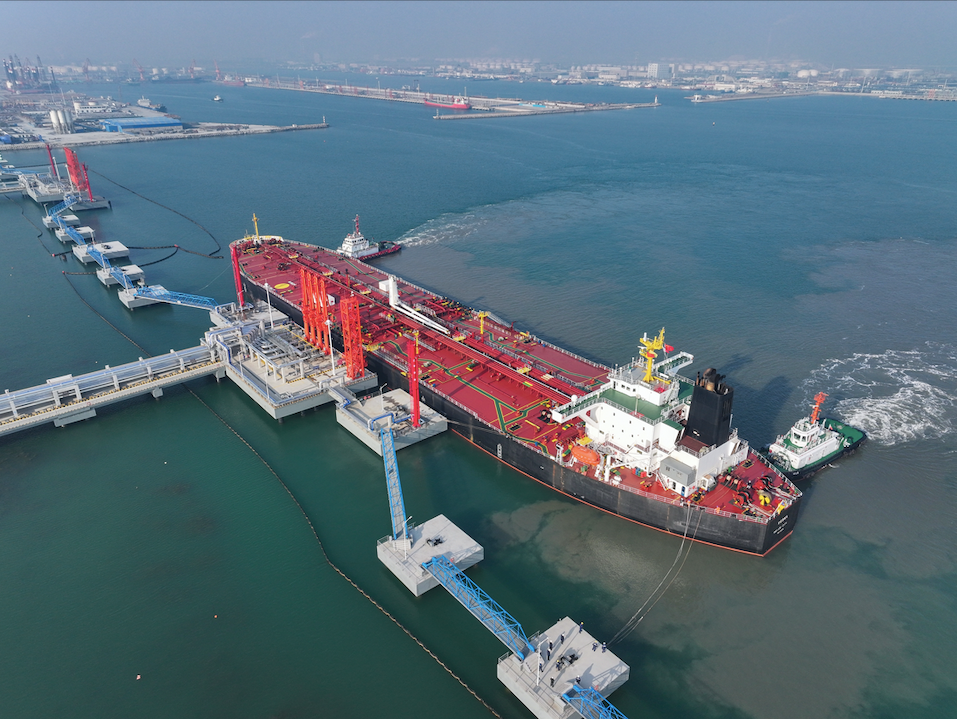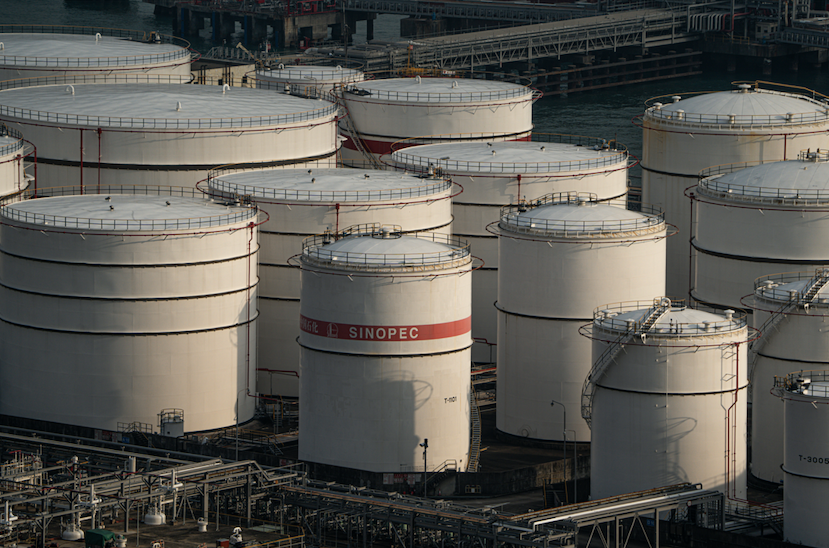
The Israel-Palestine war came following the heels of the biggest shock to commodity markets since the 1970s- Russia’s invasion of Ukraine. Since 7 October, when the war began, oil prices have responded in tandem to the fear of a protracted conflict in the Middle East. In its latest Commodity Markets Outlook Report, the World Bank cautioned that oil prices could surge to $157 per barrel should the conflict expand beyond the borders.
In this scenario, “the global economy would face a dual energy shock for the first time in decades”, said Indermeet Gill, chief economist of the World Bank.
Against this geopolitical backdrop, China has cast itself as a neutral player in the Middle East, given its stakes in oil. China is the largest importer of oil from Saudi Arabia, the world’s second-largest producer. The country has also more-than-tripled its imports from Iran in the past two years, buying 87% of Iran’s total oil exports in September.
Beyond imports from the Middle East, China also imported record volumes of cheap oil from Russia, owing to western sanctions, to build stockpiles and export refined products. In the beginning of 2023, the US expected that China will import record volumes of crude to restart its economy in the aftermath of the zero-Covid policy.
While the country set imported record amounts from Russia and Saudi Arabia, it only contribute to stockpiling amid a rather weak economic recovery. To that extent, Zhou Xinhuai, chief executive of the China National Offshore Oil Corporation (CNOOC), said “perhaps this year China’s domestic oil demand will reach a peak”.
The debate over “peak oil”, in China and worldwide
Not all stakeholders agree on the date of peak in oil demand.
How well do you really know your competitors?
Access the most comprehensive Company Profiles on the market, powered by GlobalData. Save hours of research. Gain competitive edge.

Thank you!
Your download email will arrive shortly
Not ready to buy yet? Download a free sample
We are confident about the unique quality of our Company Profiles. However, we want you to make the most beneficial decision for your business, so we offer a free sample that you can download by submitting the below form
By GlobalDataThe International Energy Agency’s (IEA’s) annual World Energy Outlook, released in October, said that based on governments’ current policies, peaks in oil, natural gas and coal demand were visible within this decade.
“The transition to clean energy is happening worldwide and it’s unstoppable. It’s not a question of ‘if’, it’s just a matter of ‘how soon’ – and the sooner the better for all of us,” IEA Executive Director Fatih Birol said in a statement.
Contrary to the IEA’s stance, the Organisation of Petroleum Exporting Countries (OPEC) released its World Oil Outlook for 2023 in the same month. This states that the world demand for oil will reach 116 million barrels per day by 2045, roughly 6 million more barrels per day than it predicted this time last year.
While the IEA bets on the success of the EV revolution, the OPEC lobby predicts increased in oil demand as policymakers globally revaluate their approach to realistic energy transition pathways. At the moment, several governments are prioritising energy security, with the EU, the UK, the US, Australia and other countries softening their climate policy targets. On top of this, some renewable projects are being delayed or shelved due to rising costs and supply chain constraints, paving way for more oil demand.
On the other hand, the IEA expects the number of electric cars to increase by almost 10 times by 2030. China has been both the largest market and a key growth driver of for refined oil products like petrol and diesel over the last two decades. But now, EV adoption rates are at their highest, with the IEA’s estimates from August showing 38% of the sales of new passenger vehicles is electric.
While the date of China’s peak oil remains debatable, the country’s massive demand alone may alter the future of oil markets. Given the scenario, can oil markets still depend on China?
China’s role in altering demand in oil markets

Since China’s accession to the World Trade Organisation in 2001, the country has steered more than half of the global increase in oil demand, increasing domestic consumption by three times in two decades. Yet, researchers from the Oxford Institute of Energy Studies told the Financial Times that oil accounts only for 19% of the country’s energy mix, with the rest fulfilled by coal and renewables.
Interestingly, before CNOOC’s Zhou made his statement about China reaching peak oil, Chinese oil giant Sinopec in early August said the country’s petrol demand will peak in 2023, two years earlier than its previous estimates. Sinopec attributed the development to a faster uptake of EVs with Zhou Yan, an official with Sinopec’s retail fuel sales unit, saying that fully electric, or “new energy vehicle” taxis and ride-hailing cars have had a big impact on fuel consumption in China.
According to the Financial Times, for the first half of 2023, China imported 11.4 million barrels per day of crude oil, up 11.7% year-on-year and up 15.3% compared with pre-Covid levels. By June, it set a new record of importing 2.13 million of oil from Russia, ahead of 1.88 million barrels per day from Saudi Arabia. However, the discounted record import led the Chinese refiners to stockpile and eye exports.
Even though China does not disclose the size of the country’s crude inventory, estimates show a stockpile of 1.02 billion barrels, compared to 347 million barrels that the US holds in strategic reserves. Without any strong consumption stimulus in China’s sluggish recovery, coupled with policies that incentivise EVs, oil prices since July have eased in line with weak economic data.
Speculations for the future
While China’s uptake of electric vehicles may be rapidly putting oil in the shadows, the country is still significantly coal dependant. Unlike many European and Asian countries switching from coal and oil to LNG as a less-pollutive transition fuel, China hopes to make a leap from coal directly to renewables. The country’s current energy mix is driven by 56% coal usage and only 8% gas.
In this regard, China’s carbon reduction targets fall short of other OECD countries, which aim for carbon neutrality before 2050, while China has committed to 2060. Given this smokescreen of various carbon emissions, critics disagree that China will reach peak oil in this decade.
“China has a net-zero carbon emission goal by 2060, which is when I expect its crude demand to ease as it gradually heads towards that [deadline],” director of LSEG Oil Research in Asia Yaw Yan Chong told CNBC.
In support of this theory, China is also a world leader in the production of petrochemicals, which are made from oil and natural gas. Assessing China’s reliance on oil imports, the dean of energy studies at Xiamen University in Xiamen, China told the New York Times, “Looking forward, I do not believe China can decrease oil demand substantially.”



